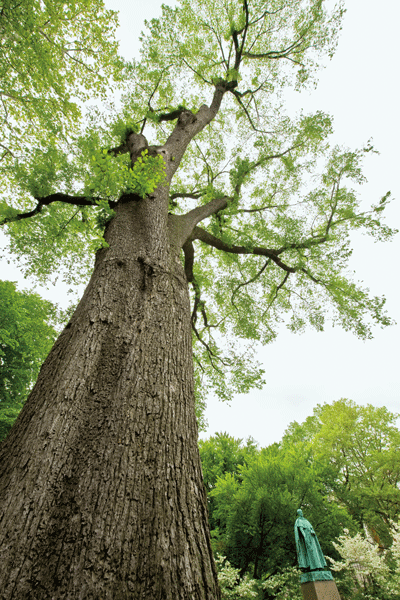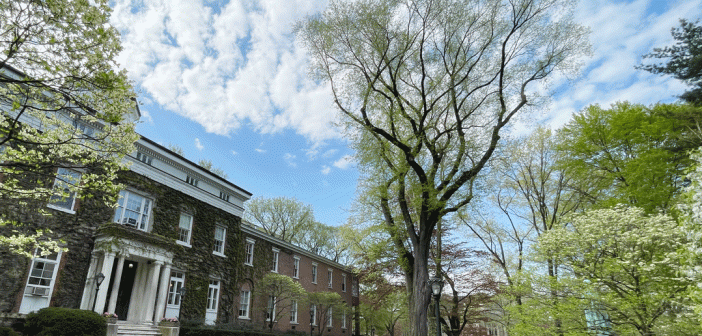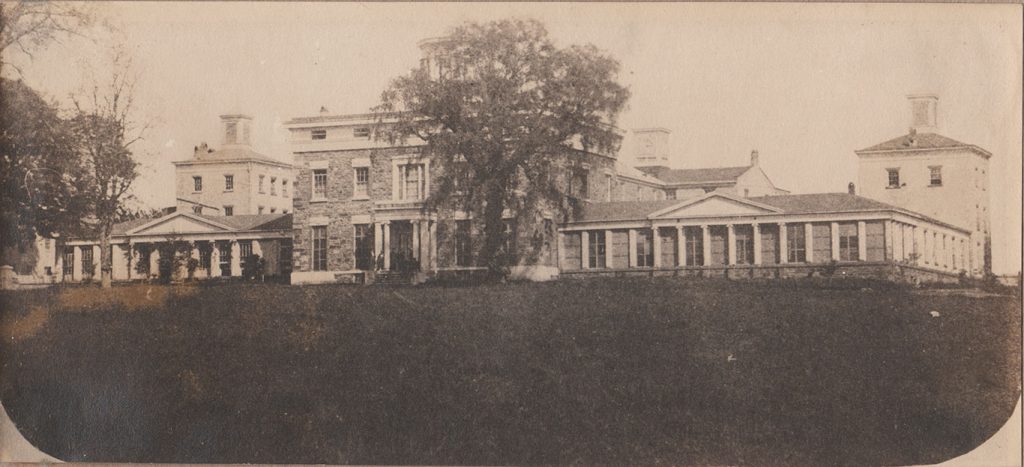
An American Elm tree estimated to be 280 years old stands tall on the Rose Hill campus. Photo by Bill Denison. Top photo by Patrick Verel.
The oldest living resident of the Rose Hill campus is getting some extra love and care from Fordham’s facilities, with an assist from a master arborist.
Standing tall next to the statue of Fordham’s founder, Archbishop Hughes, this particular specimen of Ulmus Americana, aka American Elm, has been through a lot.
It survived the Dutch Elm Disease outbreak that decimated the country’s American Elm population in the 1940s, and more recently, it sustained damage from hurricanes Sandy and Irene.
Pictures show that it was fully grown when construction began on Rose Hill’s Cunniffe House building in 1836, leading experts to estimate that it is about 280 years old.
For the last 17 years, the job of keeping the tree alive and healthy has been the responsibility of Steve Farrelly, a certified master arborist at Emerald Tree & Shrub Care.
Farrelly’s crews, working alongside Fordham’s facilities department, are pursuing several actions to keep the tree alive. The first is annual injections of fungicide that help the tree fend off Dutch Elm. The second is occasional “hair cuts” during the winter months where upper limbs are pruned, to alleviate weight bearing down on lower sections of the tree. The next cut will be this fall.
All the elm trees receive these treatments, but it’s especially important for this one, as Farrelly noted that a good portion of the tree is hollow, and it is currently being bolstered by metal cables. It has also become home to a family of raccoons that the University is working to humanely relocate.
“In an urban environment, it’s way beyond its expected life,” he said.
The Rose Hill campus features over 500 trees spread over 90 acres, including nearly 100 American Elms. Many of the towering trees, which were once ubiquitous across the region, are over 150 years old.
Fordham has received recognition in recent years for its tree care practices, and since 2011, the University has set aside an acre of land at its Calder Biological Field Station to grow its own American Elms, Red Maples, Northern Red Oaks, and Japanese Maples.
Farrelly said it’s no mystery why the American Elm is so tied to the Rose Hill campus’ identity.
“The Rose Hill campus has the most unique collection of American Elms that I’ve ever seen.”




